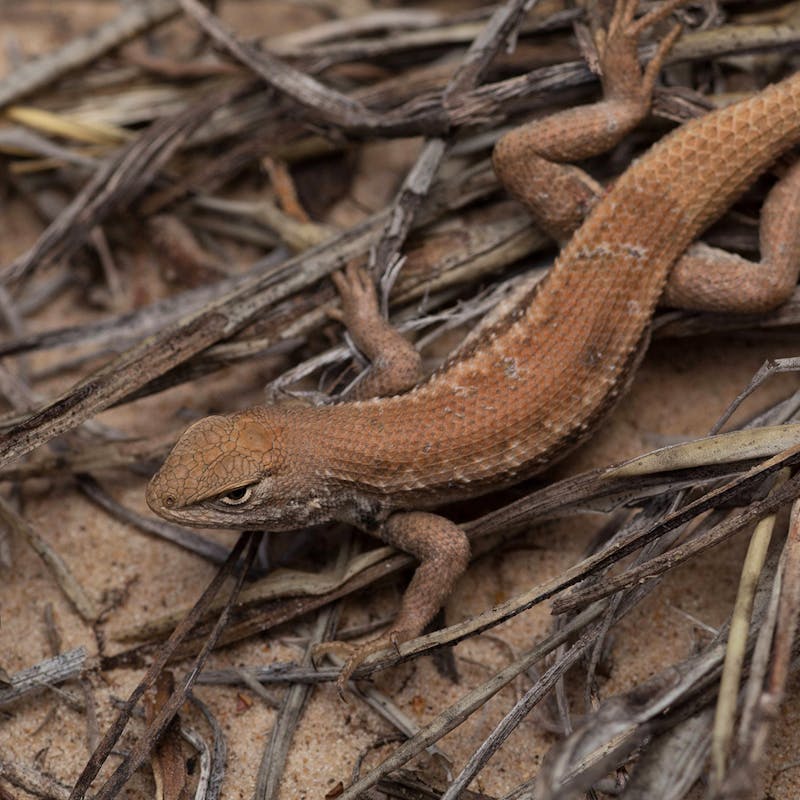As we turned down the dirt road of Garnetts Red Prairie Farm in Sheridan, Oregon, I took in the vast expanse of organic pastures and fields surrounding the quaint home and large red barn. “You’re going to want to borrow a pair of muck boots; the fields are wet this time of year,” greeted Pryor Garnett, co-owner with Kathryn Oliver-Garnett of the farm. This was going to be a good tour.
Through the Farm Bill, a package of national legislation, farmers and ranchers can apply for federal financial and technical assistance to implement conservation practices on their land. Many of these practices are dedicated to improving wildlife habitat and acknowledging the important role biodiversity plays in ensuring viable working lands that can be passed down for generations. The Garnetts commitment to ensuring this longevity is readily seen in how they balance producing food with preserving the health of the land and habitat for native wildlife.
Here are three key areas of Garnetts Red Prairie Farm that illustrate the benefit of implementing conservation practices.
The Oak Restoration Site
The farm boasts a flourishing, natural oak woodland just behind the barn, which hosts a diversity of plants including Oregon white oak, Saskatoon serviceberry and poison oak. These species create space for wildlife to coexist with farming practices. Pryor observes gopher snakes, great blue herons, coyotes, bobcats, bald eagles, osprey and red-tail hawks, among others, frequenting his land.
At the front of the property, there was a monoculture forest consisting of densely packed, underdeveloped oaks. While monoculture forests may sequester carbon, they can’t achieve full ecosystem benefits without plant diversity. Knowing this, Pryor is restoring the area’s functionality and ensuring a diversity of plant life to make this site a robust woodland habitat.
The U.S. Department of Agriculture’s Natural Resources Conservation Service Environmental Quality Incentives Program (EQIP) provides funding to thin the oaks and scrub, removing woody debris through stack and burn methods, mowing the underbrush, and planting new plants. The program also provides financial and technical assistance to agricultural producers to address natural resource concerns and deliver environmental benefits. These benefits include improved water and air quality, conserved ground and surface water, increased soil health, and the promotion of wildlife habitat.
The assistance from the Farm Bill conservation programs incentivizes better practices and benefits both the land and farmer. Unfortunately, however, the available funding offered by these programs isn’t quite enough to adequately carry out all desired projects, Pryor noted. He explained that many farmers are interested in executing conservation practices, including habitat restoration sites on their lands, but cannot afford to participate with the current payment rate. Farmers can be reimbursed for 75%, but many aren’t able to afford the associated upfront cost.
Rotating Crop Fields
Garnetts Red Prairie Farm grows a variety of grains. This winter season Pryor planted rye, wheat and barley. Pryor practices crop rotation because he understands the need to break down pathogen cycles to build soil health and ensure diversity of the microenvironment, like organisms and insect life. He also utilizes dual crop planting, where two crops are grown together in a field simultaneously to stimulate soil health.
Pollinator Hedgerows
Financial and technical assistance from EQIP has allowed Pryor to plant mixed flowering hedgerows to benefit pollinators, including native bee species such as sweat bees and carpenter bees. When the Oregon Bee Project selected Garnetts Red Prairie Farm as its inaugural Flagship Farms in 2017, researchers identified 16 species of native bees on the farm in addition to honeybees. Those bees are critical to pollinating Garnetts’ flowering crops, fruit trees and berry bushes.
The Result
Pryor has seen overall improvement for the land, the ecosystems on it and the biodiversity within it, through the federal assistance from voluntary conservation programs in the Farm Bill. With improvements to this key legislation, more farmers like Pryor can enjoy conservation successes. Congress is currently working to pass a new Farm Bill and Defenders of Wildlife is advocating for the inclusion of strong biodiversity conservation provisions and increased program accessibility for all farmers, including historically underserved producers.
Leaving Garnetts’ farm, I was grateful for the farmers in our nation working diligently on the front lines of the climate and biodiversity crises to provide sustainably and ethically produced food for our nation. Join Defenders in asking members of Congress for strong biodiversity provision in the farm bill.












Follow Defenders of Wildlife
facebook bluesky twitter instagram youtube tiktok threads linkedin